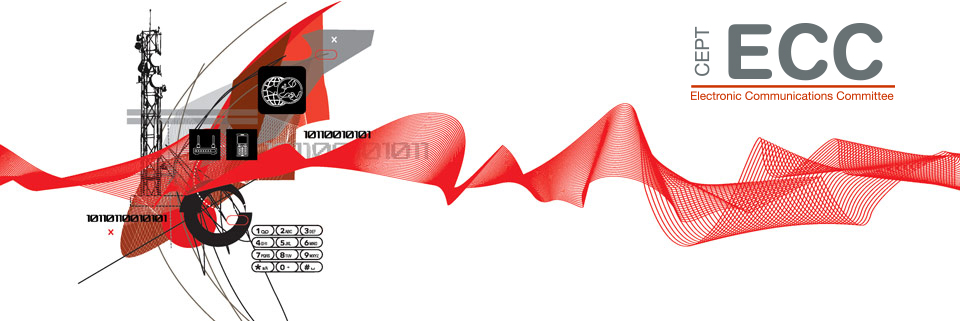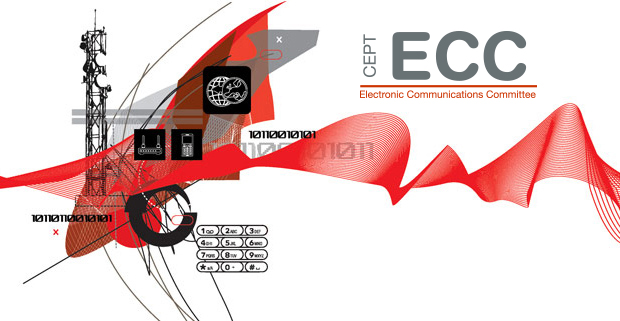ECC Newsletter December 2020
ECC helps deliver 5G for Europe
5G has made headlines across Europe and globally this year, with networks now up and running in several countries. Peter Faris explores the latest developments in the Electronic Communications Committee (ECC) to facilitate 5G’s rollout, and looks ahead to the coming years
Harmonisation of spectrum for 5G
The ECC has made significant progress on the harmonisation of several frequency bands for 5G since the August 2018 ECC newsletter article on the topic. At that point, the ECC was reaching the conclusion of its main activities on harmonisation of the ‘pioneer’ 3.6 GHz and 26 GHz frequency bands, as part of the CEPT 5G Roadmap. Not only are these now near completion, activities on other bands are, too.
3.6 GHz band (3400-3800 MHz): Following the initial update of ECC Decision (11)06 to address 5G in 2018, the ECC has undertaken further activities to support administrations with the deployment of 5G in these bands. ECC Report 287 provides guidelines for administrations in defragmenting existing usage within the band, to facilitate large contiguous blocks for 5G. ECC Report 296 outlines the regulatory options for synchronisation. ECC Recommendation (15)01 was updated to include cross-border coordination guidelines within the band.
26 GHz band (24.25-27.5 GHz): This band was harmonised for 5G within CEPT in 2018 through ECC Decision (18)06. Equivalent global conditions for the band were subsequently the subject of intense debate at the World Radiocommunication Conference in 2019 (WRC-19). The ECC has recently updated ECC Decision (18)06 in order to address the limits in protecting passive services in the 23.6-24 GHz band, which were adopted by WRC-19. The ECC also agreed a timeframe of 2024 for the introduction of the second stage limits, to ensure a balance between the protection of the scientific services and the facilitation of the introduction of 5G in Europe. These conclusions were also adopted in the equivalent EC legislation for EU member states. Additional reports have been developed to provide guidance on synchronisation (ECC Report 307) and on authorisation schemes (ECC Report 317). A draft ECC Recommendation on cross-border co-ordination is under development.
The ECC is also in the process of developing harmonisation rules for the 40.5-43.5 GHz and 66-71 GHz frequency bands, which were agreed for global harmonisation at WRC-19 and which are also the subject of a new EC Mandate that will update the relevant EU framework.
ECC PT1 has commenced work in the 40 GHz range, while for 66-71 GHz the ECC recently approved draft CEPT Report 78 for public consultation. This proposes that no change is made to the existing technology neutral framework in this band.
Existing mobile bands at lower frequencies, below 3 GHz, will play an important role in providing wide area 5G coverage – the higher frequency bands mentioned above are more suited to providing capacity in dense urban areas. In this context, the ECC has been working to update existing harmonisation conditions to ensure their suitability for 5G, where applicable.
This led to updates in the 900/1800 MHz (ECC Decision (06)13), 2 GHz (ECC Decision (06)01) and 2.6 GHz (ECC Decision (05)05) bands in 2019. These bands have also been the subject of an EC Mandate. A more comprehensive review of the 900 and 1800 MHz bands to develop a new technology neutral framework is also underway, following the initial update in 2019. Additional work has commenced in the 2.3 GHz band to revise ECC Decision (14)02.
Rollout of 5G in CEPT countries
All of these activities have helped to facilitate the introduction of 5G across CEPT in various bands with initial deployments appearing in 2019 and increasing rapidly during 2020. Spectrum auctions have also taken place, or are planned, in 700 MHz, 3.4-3.8 GHz and 26 GHz, in several countries.
According to data from the GSA, full commercial 5G services are now available in 19 CEPT countries (48 operators in total), while a further 21 countries have networks in the planning or trial stages. Details of the status of 5G in EU Member States is available from the European 5G Observatory.
Figure 1:5G deployment status in CEPT (data source: GSA NTS database as of 23 November 2020)
The majority of the launched networks are in the 3.4-3.8 GHz band, reflecting the earlier availability of spectrum in this band. Rollout of 26 GHz is expected to increase in the coming months, with several licensed or planned networks in the pipeline.
Figure 2:Frequency band breakdown of currently deployed and planned 5G networks in CEPT countries (data source: GSA NTS database as of 27 November 2020)
Deployments are mainly targeting urban areas first. Population coverage ranges from around 15% to 40% in EU countries which have deployments as of Q2 2020, according to an Analysys Mason study.
Figure 3: Indicative map of 5G coverage locations in CEPT based on crowd-sourced user data (Source: nPerf – see the link for a zoomed in view. Note that some of these deployments are classed as trial networks in the corresponding data in Figure 1)
A large number of 5G devices are now available, which allow consumers to enjoy the full benefits of high speed connectivity direct to their smartphone using 5G.
The recently deployed networks also play an important role in providing much needed additional capacity while existing networks are under strain due to the increase in home working during 2020.
These developments demonstrate the success of ECC spectrum harmonisation to allow roll-out of 5G across Europe.
Looking to the future – new CEPT Roadmap and 6G
With the successful launch of 5G and the finalisation of many of the ECC's existing 5G activities, the ECC decided to wrap up the existing CEPT 5G Roadmap in March 2020. A new future-looking Roadmap – 5G and beyond – was addressed by the ECC in November. This latest Roadmap is developed in the context of the new ECC Strategic Plan for 2020-2025 (as introduced in our newsletter in August 2020), which identifies wireless broadband and connectivity as a major topic for study in this period.
It takes into account the ongoing activities in the development of harmonisation conditions for 900/1800 MHz, 2.3 GHz, 40.5-43.5 GHz and 66-71 GHz. It addresses the preparations for relevant agenda items on mobile issues for WRC-23, including the possible identification of additional spectrum bands for 5G.
It also identifies the need for the ECC to monitor the development of new technologies which could have an impact on spectrum management. This includes areas such as artificial intelligence and blockchain, which are referenced in the Strategic Plan as possibly offering opportunities to improve spectrum efficiency.
Looking to the longer term, the inevitable question of 6G can also be raised. While it may seem early to look this far ahead – especially while 5G is still in the early stages of deployment – it is worth noting that the 6G concept is already under discussion within academia, with ambitious goals to build on the connectivity and performance provided by 5G. Possible future technologies under discussion include the use of intelligent reflective surfaces and a move to frequency bands in the Terahertz range.
Continuous monitoring of such future developments in the Roadmap will help to ensure that the ECC stays on top of the upcoming issues and will help to address any spectrum challenges which arise. The Roadmap will be regularly monitored and updated in this context, allowing the ECC to continue to build on the existing success in delivering 5G.
Peter Faris, Spectrum Expert
European Communications Office






